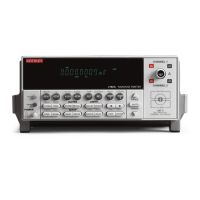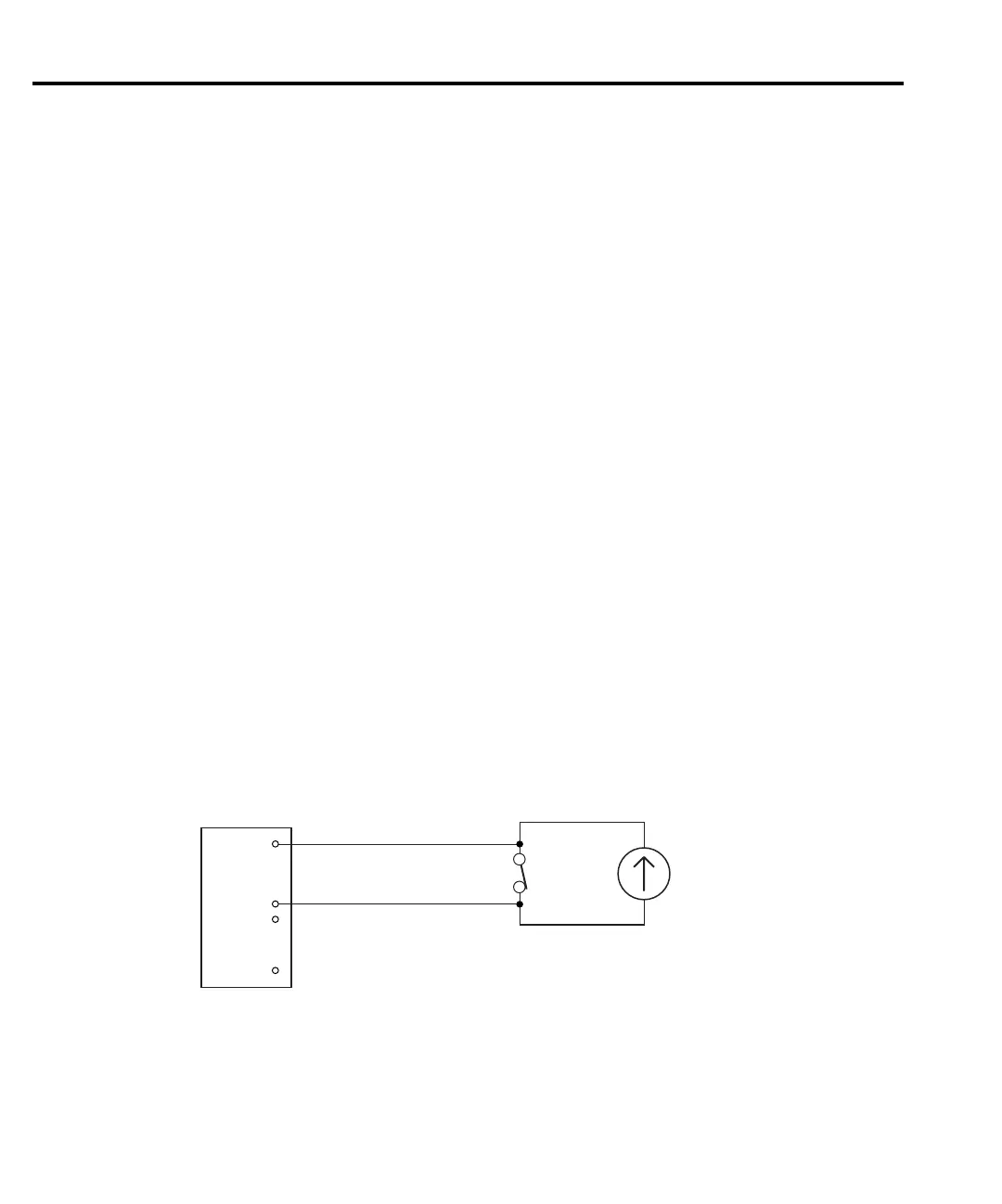2-24 Voltage and Temperature Measurements
Compensating for thermal EMFs — Although the 4-wire measurement method minimizes
the effects of lead resistances, other factors can affect low-resistance measurement accuracy.
Thermal EMFs, and other effects can add an extraneous DC offset voltage (V
OFFSET
in
Figure 2-10) to the measured voltage.
The Relative feature of the Model 2182 can be used to null out the offset voltage. In general,
this is done by disconnecting the current source and zeroing the reading on the Model 2182 by
pressing the REL key (see “Measuring voltage and temperature, Nulling thermal EMFs”). The
DC offset voltage is effectively cancelled as long as it remains comparatively steady. If the offset
voltage varies, the DC current-reversal technique should instead be used.
The DC current-reversal technique to cancel the effects of thermal EMFs requires a source
that can output currents equal in magnitude, but opposite in polarity. In general, a voltage
measurement is performed on both the positive and negative alternations of the current source.
The averaged difference of those two readings cancels out the thermal EMF component of the
measurements. The Model 2182 can automatically perform the measurements, and then
calculate and display the result by using the Delta measurement mode. For Delta measurements,
a Keithley SourceMeter (Model 2400, 2410, or 2420) or the Keithley Model 220 Current Source
can be used to provide current-reversal. Details on performing Delta measurements are provided
in Section 5.
Testing switch contacts
Low power switches — Figure 2-11 shows how the Model 2182 can be used to measure the
resistance of a switch contact. The constant current is provided by the Keithley Model 220
current source, which can source up to 100mA. To avoid oxide puncture, the voltage across the
switch contact should be ≤20mV. Voltage is limited by choosing a current that will not result in
a larger voltage drop than 20mV. For example, with a contact resistance specified at 500mΩ, the
current should be no larger than 40mA.
Figure 2-11
Measuring switch contact resistance
With current known and voltage measured, resistance can be calculated using Ohms Law:
R = V/I.
Test Circuit
Switch
(DUT)
HI
HI
LO
LO
DCV1CH 1
CH 2
2182
Model 220
Current
Source

